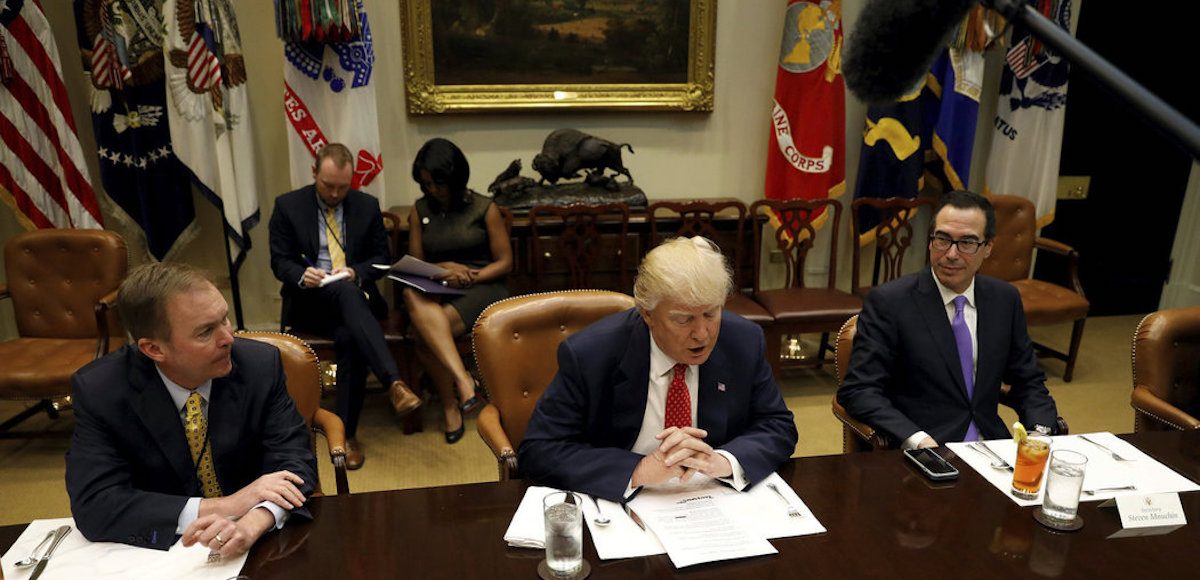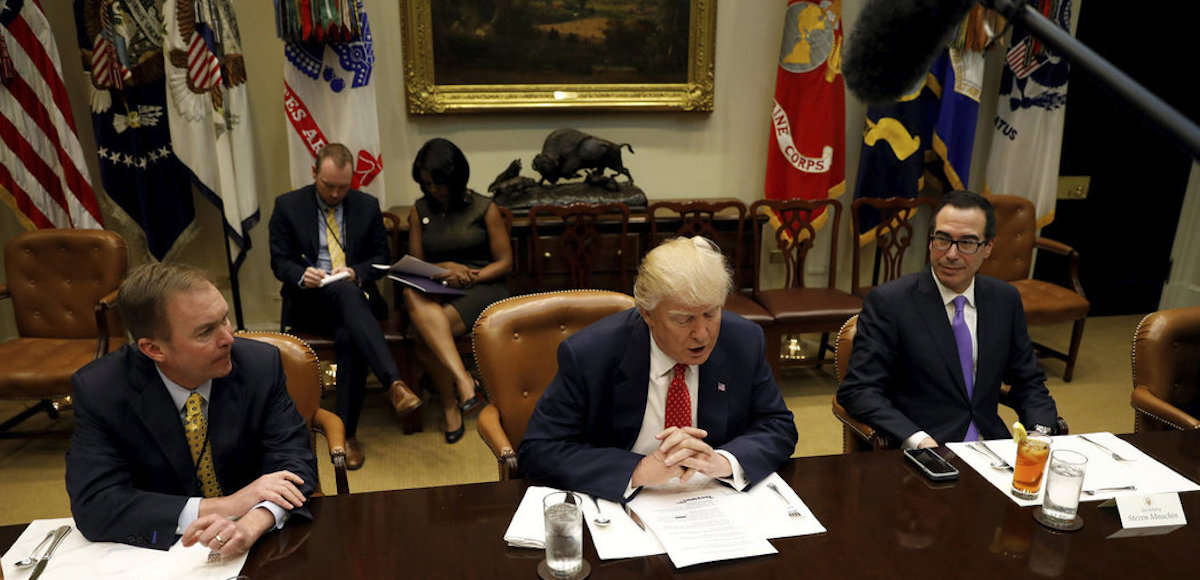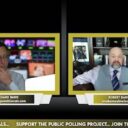

Director of the Office of Management and Budget Mick Mulvaney (L) and Treasury Secretary Steve Mnuchin (R) flank U.S. President Donald Trump as he hosts a “strategic initiatives” lunch at the White House in Washington, U.S., February 22, 2017. (Photo: Reuters)
Office of Management and Budget (OMB) Director Mick Mulvaney unveiled MAGAnomics last week, the economic agenda of the Trump Administration. It’s the outline known as the “unified agenda” at each White House, but it basically the exact opposite policy adopted by the Obama Administration.
“So, what is MAGAnomics? It is tax reform. It is, what we’re calling the ‘regulatory accountability project’– regulatory accountability project,” Director Mulvaney said at the gathering with media on Thursday. “It’s longer, but it’s at least a little bit more descriptive than ‘unified agenda.'”
The director also said the Trump Administration wants to distance itself from the unified agendas of the past because, unlike their predecessors, they want “a way to bring to some accountability to regulations.”
It’s now the regulatory accountability project. President Trump signed an executive order almost immediately after taking office requiring the federal government to remove two regulations for every new one they propose to implement. Another order signed was meant to simplify and streamline the regulatory state.
“In the last six months here, the Obama administration put on over $6 billion in new regulatory burden. The last six months, just over $6 billion. We had zero,” he boasted. “In the first five months in their administration back in 2009, they had over $3 billion of new regs. We cleared the decks of $22 million of regs. So we actually went the other way.”
President Trump also signed 16 Congressional Review Acts (CRAs), which roll back regulatory burdens. Thus far, only 4 have gone through the agency process but this regulatory policy has led to the removal of 860 burdensome rules and regulations.
Regulations take a big toll on the economy and are thus a big part of MAGAnomics, but certainly not a centerpiece.
“Energy dominance is part of this. Welfare reform is part of this. Infrastructure is part of this. Our trade policies is part of this. Even the spending restraint that we tried to introduce in the budget is part of this,” Director Mulvaney explained. “All of those things are designed towards one common end, and that is 3% sustained economic growth in this country again.”
The U.S. economy under President Ronald Reagan averaged nearly 4% gross domestic product (GDP) and even surpassed 7%. The OMB director drew a parallel between the economic conditions before the Reagan Administration and the Trump Administration, citing what could be accurately described as an economic malaise.
“Thirty-five years ago, the situation the country was in had some similarities to where we were as we ended the Obama Administration,” he noted. “Things were kind of rough.We had stagflation, we had malaise, we had all these challenges that the country faced economically.”
Closely-watched economic indexes and gauges–including business and consumer confidence-optimism after the election of President Donald J. Trump either met or surpassed historic levels measured after the election President Reagan. But optimism has tempered slightly as Republicans in Congress struggle to move the president’s agenda forward.
“We’ve done it before. In fact, we’ve always done it,” Mr. Mulvaney added. “The last 10 years was the first time we have not been able to do it, I think, ever. We can do it again. We absolutely fully believe that.”
Under Barack Obama, GDP averaged less than 2% annually, 1.5% as of August 2016, the lowest for any U.S. president since World War II. The abysmal economic record was followed closely by President Harry S. Truman, who from 1946 to 1952 led the nation to only 1.7% growth.
The latest GDPNow model forecast (July 19) for real GDP growth in the second quarter of 2017–a seasonally adjusted annual rate forecast by the Atlanta Federal Reserve–stands at 2.5%. That’s up from the 2.4% forecast released on July 14.






